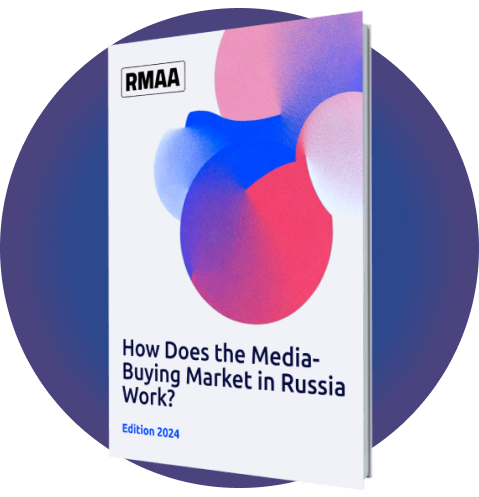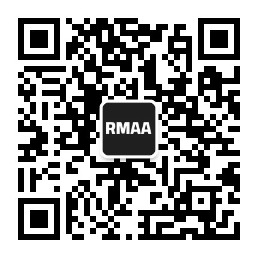Blog about successful marketing strategies in russia
Kazakhstan Press and Online Media Redefining Connections


MEDIA BUYING
Share this Post
In 2024, the number of digital platform users continues to grow steadily, with 92.3% of Kazakhstan's population using the Internet, driving the development of online publications. At the same time, print media has been experiencing a decline in advertising volumes since 2018, with annual decreases ranging from 12.2% to 38.9%, although it maintains influence in niche segments such as culture, education, and children's topics.
In 2023, the total advertising budget in Kazakhstani media exceeded 113.4 billion KZT, with print media being the only segment to show a 10% decline. However, advertising in traditional media still offers its own set of advantages, which is why it remains part of many marketing strategies.
Let’s take a closer look at the current state of Kazakhstan's media market and the opportunities available to advertisers.
Newspapers and Local Magazines
As of 2024, there are approximately 4,000 registered print publications in Kazakhstan. Most of these outlets focus on regional audiences to meet local informational needs.
Among print media, newspapers dominate, forming the majority of the segment. Their topics range from news and analytical articles to specialized publications targeting various sectors such as economics, science, culture, and more. Local newspapers primarily use Russian, but some are published in both Kazakh and Russian, alternating languages to reach a broader audience.
Top 10 Print Newspapers in Kazakhstan
|
|
|
|
|
|
|
|
|
|
|
|
|
|
|
|
|
|
|
|
|
|
|
|
|
|
|
|
|
|
|
|
|
|
|
|
|
|
|
|
|
|
|
|
|
|
|
|
|
|
|
|
|
|
|
|
|
|
|
|
|
|
|
|
|
|
15 most popular print newspapers in Kazakhstan based on circulation volume
|
|
|
|
|
|
|
|
|
|
|
|
|
|
|
|
|
|
|
|
|
|
|
|
|
|
|
|
|
|
|
|
|
|
|
|
|
|
|
|
|
|
|
|
|
|
|
|
|
|
|
|
|
|
|
|
|
|
|
|
|
|
|
|
|
|
|
|
|
|
|
|
|
|
|
|
|
|
|
|
|
|
|
|
|
|
|
|
|
|
|
|
|
|
|
|
Over the past decade, more than ten major print publications have shut down in Kazakhstan. The primary reason for this decline is the shrinking audience for print media, driven by digitalization and the growing popularity of online platforms.
Challenges in monetizing print media have been exacerbated by declining advertising revenues. Companies increasingly prefer investing in digital advertising, which offers more precise tracking of campaign performance. Additionally, rising costs for materials and logistics make traditional publishing less financially viable.
Despite these challenges, Kazakhstan has seen successful examples of transformation. Some publications have transitioned to digital formats or adopted them alongside print editions, maintaining and even expanding their audiences thanks to the accessibility of online content.
|
|
|
|
|
|
|
|
|
|
|
|
|
|
|
|
|
|
|
|
|
|
|
|
|
|
|
|
|
|
|
|
|
|
|
|
|
|
|
|
|
|
|
|
|
|
|
|
|
|
|
|
|
|
|
|
|
|
|
|
|
|
|
|
|
|
|
|
|
|
|
|
|
|
|
|
|
In Kazakhstan, a significant development has taken place in the print media sector: several major newspapers, including ‘Egemen Qazaqstan’, ‘Kazakhstanskaya Pravda’, and regional publications, have merged under a single brand — ‘Azaq Gazetteri’. The main goal of this consolidation is to enhance operational efficiency, optimize resources, and better meet the needs of a modern audience increasingly turning to digital platforms.
The merger has addressed multiple objectives: reducing management costs, establishing a unified editorial policy, and making these publications more competitive. However, this move isn’t just about economics; it is also a strategic effort to preserve the national information space and promote the Kazakh language.
Local magazines in Kazakhstan strive to retain their readership by focusing on national values. Among the circulation leaders are several publications catering to both children and adults:
‘Ak Zhelken’ is published with a print run of 5,000 copies. It targets schoolchildren and students with educational and cultural content. ‘Baldyrgan’ appeals to younger children, offering fairy tales, puzzles, and stories in Kazakh, reaching 26,000 copies. ‘Tengri’ is a cultural magazine, distributing 33,000 copies. It covers art, history, and contemporary trends.
Top Glossy, Scientific, and Business Press
In Kazakhstan, interest in glossy, scientific, and business publications remains strong in 2024, despite declining circulations and the withdrawal of several well-known brands from the market. For instance, Cosmopolitan ceased operations in Kazakhstan in 2022 due to changes in the advertising market and declining audience interest in print media. Other publications, such as Karavan and Megapolis, have also closed down, primarily due to shrinking interest in print formats and the shift of audiences to online platforms. The drop in advertising revenue was one of the main reasons for these closures.
Currently, the following magazines stand out. Most of them operate as franchises acquired from global media holdings. This presence benefits advertisers, as regional versions of many of these publications have completely exited the Russian market. However, their strong reputations have allowed them to maintain a significant audience.
Glossy magazines, like the local press, are predominantly published in Russian. An exception is the online version of National Geographic Kazakhstan. Another notable publication is ELLE Kazakhstan, which is printed both in Kazakh and Russian, with Russian taking priority.
|
|
|
|
|
|
|
|
|
|
|
|
|
|
|
|
|
|
|
|
|
|
|
|
|
|
|
|
|
|
|
|
|
|
|
|
In addition to the top ‘veterans’, Tatler Asia is worth noting. This magazine is published across several Asian countries, including Hong Kong, Singapore, Malaysia, the Philippines, Thailand, Macau, mainland China, Taiwan, and Vietnam. The publication caters to an audience interested in luxury lifestyles, fashion, art, and social events.
In 2024, Tatler made its debut in Kazakhstan, becoming the first local edition of the globally renowned brand in the country. The inaugural issue was released in December, focusing on unique stories of local entrepreneurs, creative elites, and cultural events.
The magazine highlights fashion and current trends while profiling individuals shaping the modern image of Kazakhstan. Its content blends international standards of material presentation with deep respect for the region’s national identity and cultural nuances.
Overall, this publication, alongside online media, represents one of the most attractive options for brands targeting affluent and trend-conscious audiences.
Online Media
In the context of growing competition among online publications, key metrics such as unique visitors, audience reach, and influence in the information landscape are becoming increasingly important. The leaders include both national news portals and niche websites covering specific topics such as politics and economics.
The Top Online Media in Kazakhstan for 2024 features outlets that not only publish news promptly but also leverage modern technologies, including SEO optimization, social media promotion, and multimedia formats. These sites attract millions of daily users, with most publications primarily in Russian.
Top 10 Media Websites in Kazakhstan for 2024
|
|
|
|
|
|
|
|
|
|
|
|
|
|
|
|
|
|
|
|
|
|
|
|
|
|
|
|
|
|
|
|
|
|
|
|
|
|
|
|
|
|
|
|
|
|
|
|
|
|
|
|
|
|
|
|
|
|
|
|
|
|
|
|
|
|
|
|
|
|
|
|
|
|
|
|
|
It is worth noting that Tengrinews.kz, which ranks first in the 2024 ratings, is part of the Effective Media Liaison holding, managing a number of successful niche resources, including Tengriauto.kz. The latter specializes in automotive topics and attracts approximately 1.4 million users per month, 84.5% of whom are men aged 25–34.
An example of successful niche integration with Tengriauto.kz is our advertising campaign for the GAC Motor brand. The project included articles and reviews of car models to organically align the brand with the interests of the website's audience. Additionally, the content was supported by social media posts from Tengri, including announcements of test drives. You can view the results of the campaign here.
Media in Social Networks
The largest media outlets in Kazakhstan have adapted to new conditions and actively utilize Telegram, Instagram, and other platforms to distribute news, analysis, and entertainment content.
The main advantage of social media presence for media outlets is speed, proximity to the audience, and the ability to interact with readers in real time. Users not only consume information but also engage in discussions. Additionally, social media allows for faster collaboration with advertisers.
Key players in Kazakhstan’s media landscape, such as Dauletten, Tengrinews, and Zakon.kz, have built vast communities on Telegram. In fact, most local news outlets are highly active on the platform.
Top Telegram Channels of Kazakhstani Media
|
|
|
|
|
|
|
|
|
|
|
|
|
|
|
|
|
|
|
|
|
|
|
|
|
|
|
|
|
|
|
|
|
|
|
|
|
|
|
|
|
|
|
|
|
|
|
|
|
|
|
|
|
|
|
|
|
|
|
|
|
|
|
|
|
|
Overall, digitalization has transformed the way information is delivered, enabling media outlets to connect more closely with their audience and enhancing their influence on public opinion.
Popular Glossy Magazines in Kazakhstan on Social Media
Unlike news outlets, leading magazines in Kazakhstan primarily leverage Instagram to engage with their audience, share exclusive content, and promote advertising campaigns.
Forbes Kazakhstan
@Forbes_kz, 221K followers
The publication shares analytical materials on business and success, along with advertising integrations for premium brands.
Ad Integration with Apple
National Geographic Kazakhstan
@natgeoqaz, 100K followers
Focused on unique photo projects and educational posts in Kazakh. Advertising content often features ecological projects and travel.
Ad Post for Visit.Dubai
Esquire Kazakhstan
@esquirekazakhstan, 59.6K followers
The account stands out with stylish visuals and content on culture, fashion, and society. Advertising integrations include men's style and technology brands.
Ad Integration with BORK
Harper's Bazaar Kazakhstan
@harpers_bazaarkz, 45.3K followers
Focused on fashion trends, social events, and beauty. Advertisements frequently feature luxury cosmetics and clothing brands.
Ad Integration with Martini
ELLE Kazakhstan
@elle_kazakhstan, 35.5K followers
Promotes fashion and women’s lifestyles. The account showcases partnerships with local designers, cosmetic brands, and electronics or home appliance brands.
Ad Integration with BORK
Glossy publications in Kazakhstan use Instagram to attract readers with unique visual content and exclusive offers. Notably, advertising posts are seamlessly integrated into the magazines' overall style.
Conclusions
In 2024, Kazakhstan's media market underwent significant changes, primarily driven by digitalization and shifting content consumption habits.
Online publications continue to grow their audiences, particularly among younger demographics, while print media maintains its foothold in specialized niches. Media holdings such as Effective Media Liaison are actively developing niche projects to meet the needs of targeted audiences. One notable trend is the “seamless” integration of brands into media content, as demonstrated by our agency’s successful campaign for GAC Motor, leveraging the popular Kazakhstani publication Tengriauto.kz.
The future of media in Kazakhstan lies in the growth of digital technologies, increased investments in native advertising and multimedia content, and rising competition among outlets for audience attention. In the coming years, the key focus will be on maintaining audience trust and adapting to new formats of information consumption, predominantly online.
However, the potential for collaboration with media in Kazakhstan is already tangible and effective. RMAA is ready to assist in promoting your brand in the Kazakhstani media market, offering tailored strategies and formats to suit your needs. To get in touch with our manager, please leave a request through the contact form.
Join 2,000+
of your Peers!
You will be the first to know about Russian marketing insights, news and updates from our agency. Stay tuned!
Get our latest articles delivered to your email inbox and get our exclusive White Paper
"A media buyer's quick guide for effective work in Russia"
for FREE!
How does the Media Buying Market in Russia Work?
Navigating the Media Buying System in Russia

Ready to partner with the specialists in Russian marketing and advertising?
About the Author
Expert in Media Buying. Julia specializes in optimizing and executing strategic media placements across Russia & the CIS region.
Join 2,000+ of your Peers!
Get our latest articles delivered to your email inbox and get our exclusive White Paper "A media buyer's quick guide for effective work in Russia?" for FREE!
You will be the first to know about Russian marketing insights,
news and updates from our agency.
Stay tuned!
We're updating our website's design step by step, so some pages may look different. Thank you for your understanding.
Got it














